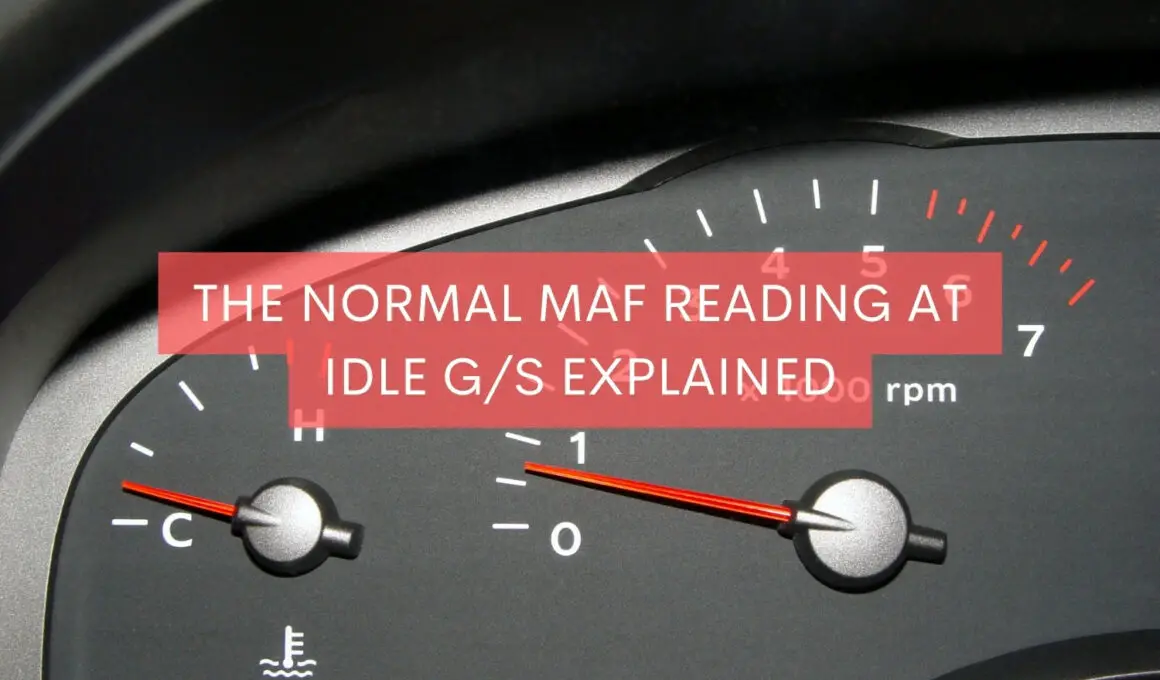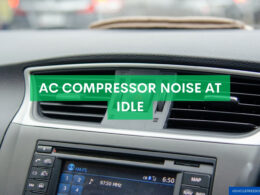In This Article Show
Today we’re shedding some light on a pivotal component to your car’s engine management system: the Mass Air Flow (MAF) sensor.
Have you ever wondered how your car’s engine determines the exact quantity of fuel to inject at any given time? It’s not by chance or magic; it’s largely due to the MAF sensor. It is responsible for reading the volume and density of air entering the engine and relaying this information to the car’s computer system. One of the crucial measurements from this sensor is the MAF reading at idle G/S, which stands for grams per second.
Throughout my career, I’ve found that understanding these readings and the “normal” range can be pivotal in diagnosing engine problems and maintaining optimal vehicle performance.
This blog post’ll delve deep into what constitutes a normal MAF reading at idle G/S, why it’s important, and how to troubleshoot if things go awry.
What is the MAF Sensor, and What Does it Do?
The Mass Air Flow (MAF) sensor, as the name implies, is a device primarily used to measure the mass flow rate of air entering your vehicle’s engine. It’s one of the critical components in your engine’s management system that is often nestled between the intake manifold and the air filter.
When your car engine is running, whether idling or at full throttle, it requires air for combustion. This air has to be properly measured and controlled to ensure efficient combustion, which is where the MAF sensor comes into play.
Its primary function is to send accurate information about the air mass to the Engine Control Unit (ECU), which then uses these readings to determine the appropriate amount of fuel needed for optimum combustion.
Essentially, the MAF sensor is a gatekeeper that ensures your engine gets the perfect air-fuel mixture. This balance is critical because an overly rich mixture (too much fuel, not enough air) can result in wasted fuel and increased pollutants, while an overly lean mixture (too much air, not enough fuel) can cause engine damage in the long run.
In practice, the MAF sensor does its job by using either a hot wire or a spring-loaded vane (depending on the type of MAF sensor in your vehicle) to detect changes in air density and volume. This information is then sent as a voltage signal to the ECU, which interprets it as a mass air flow reading.
Understanding this concept and its application is an integral part of my job as a mechanic with 13 years of experience in the field. To keep your car running smoothly, it’s crucial to monitor MAF sensor readings and know what constitutes as ‘normal,’ especially when the engine is idling.
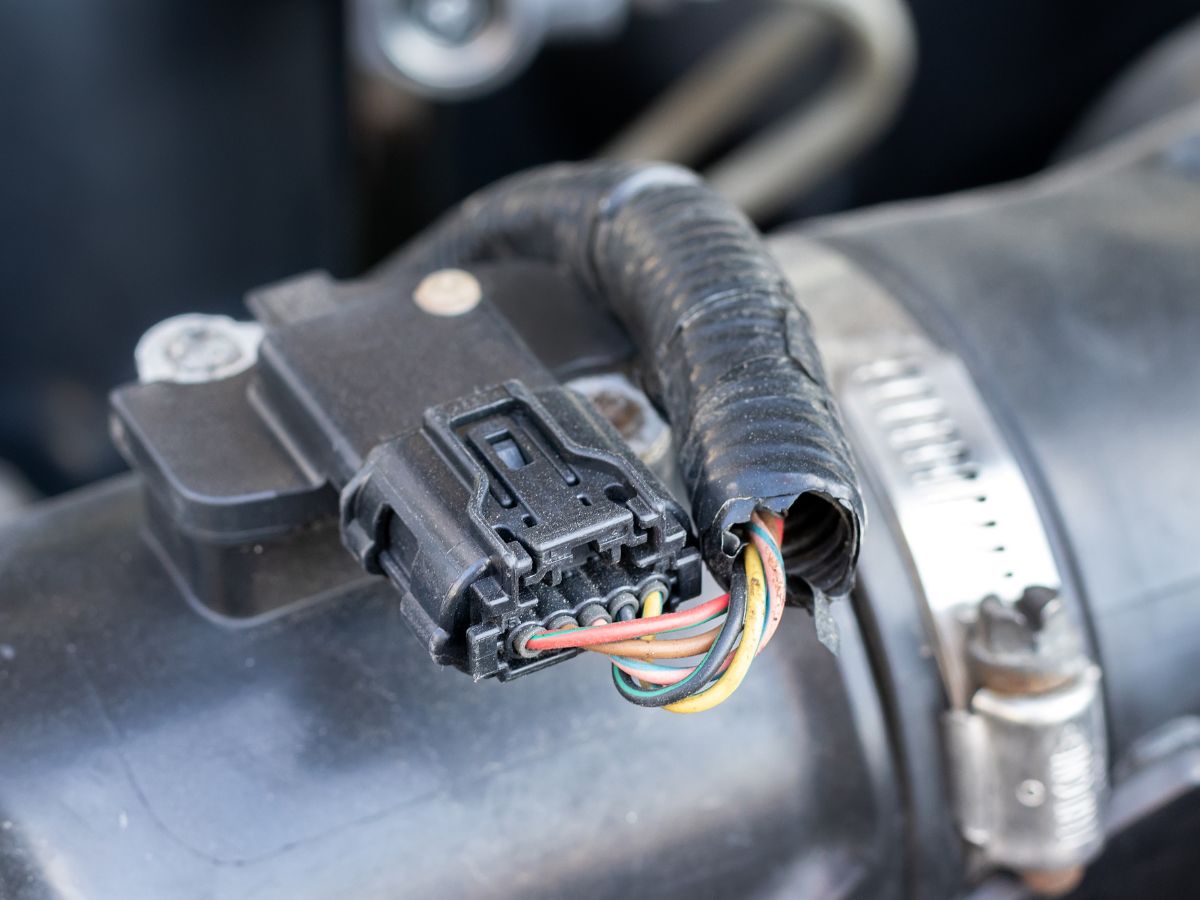
Why is MAF Reading at Idle G/S Important?
The Mass Air Flow sensor’s readings, specifically at idle G/S (Grams per Second), hold significant importance for a few reasons. The MAF sensor sends real-time data about the mass of air entering the engine to the ECU, even when the vehicle is in idle mode. This data is crucial because it directly impacts the air-fuel mixture that the ECU determines for optimal engine performance and efficiency.
Idle G/S is the amount of air in grams that is flowing per second through the MAF sensor when your engine is idling – essentially when you’re not revving the engine or driving around. This information might seem trivial, but it’s quite essential.
Why, you ask? When your car is idling, it should require less air since the demand for power is relatively low. If the MAF sensor readings at idle G/S are higher or lower than the ‘normal’ range, it could indicate potential issues with your vehicle.
High MAF readings at idle might suggest a vacuum leak or a faulty MAF sensor reporting more air than is actually present. On the other hand, lower readings could mean there is a restriction in the intake, or again, a MAF sensor issue causing underreporting of the air entering the engine.
In my 13 years as a mechanic, I’ve seen numerous cases where abnormal MAF readings at idle G/S were the first sign of underlying engine issues. Identifying these abnormal readings early on can help you address potential problems before they escalate, saving you time and potentially costly repairs.
The Normal MAF Reading at Idle G/S
Determining the “normal” Mass Air Flow (MAF) sensor reading at idle can be somewhat challenging because it’s not a one-size-fits-all scenario. The MAF reading can vary depending on factors like the make and model of your vehicle, the engine size, the age and condition of the vehicle, and even the altitude at which you’re driving.
However, as a rule of thumb and from my 13 years of experience as a mechanic, most vehicles with a fully warmed up engine idle between 3.5 to 5.0 G/S (grams per second). In other words, this is the amount of air flowing through the MAF sensor per second when the engine is idling.
Some vehicles, especially those with larger engines or high-performance vehicles, might have slightly higher idle G/S readings. On the flip side, smaller engines might have slightly lower readings. These variations underscore the importance of knowing your vehicle’s specific normal MAF reading range, which you can typically find in the vehicle’s service manual.
Keep in mind that these readings are for engines at operating temperatures. If you just started your car, especially in colder weather, the MAF readings could be higher until the engine warms up. That’s completely normal and nothing to worry about.
Maintaining normal MAF readings at idle G/S is vital for optimal engine performance and efficiency. It might be time to investigate if your readings fall outside the normal range.
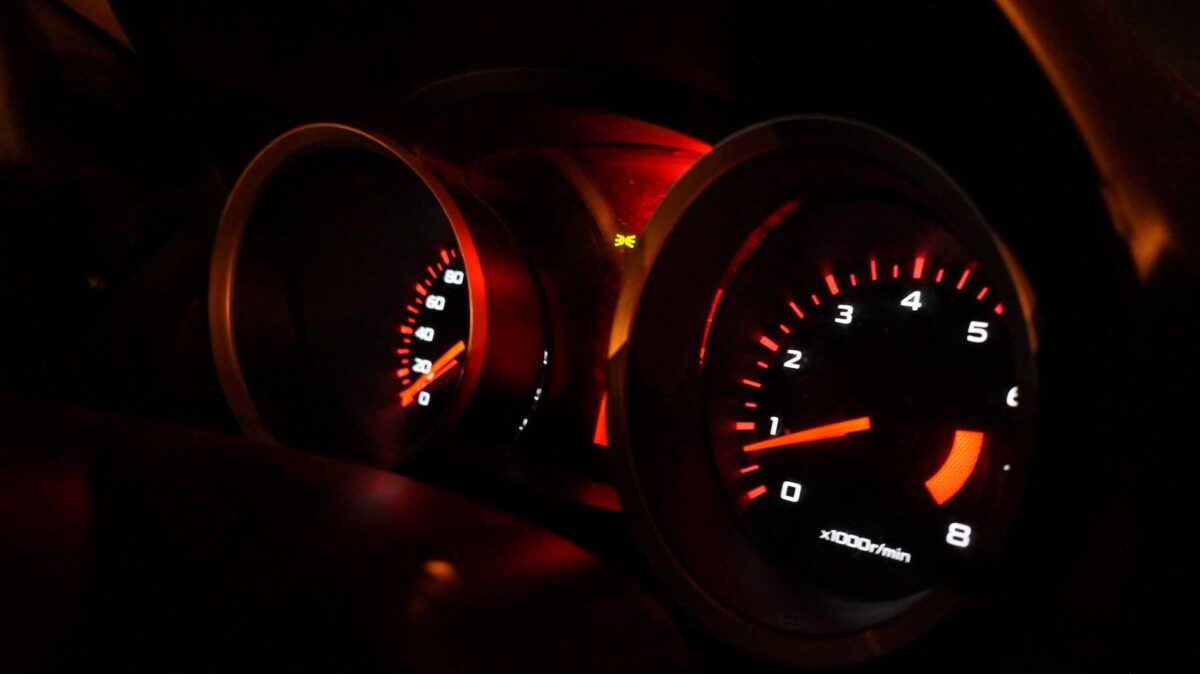
Understanding MAF Sensor Readings: Key Factors and Variables
While we’ve established a general guideline for what’s considered a ‘normal’ MAF reading at idle G/S, it’s important to understand that various factors can influence this reading. These are some of the key variables that can impact your MAF sensor readings:
1. Vehicle Make and Model
Different vehicles have different engine designs, so the normal MAF reading can vary. For instance, high-performance sports cars and heavy-duty trucks may have higher readings due to their larger engines and higher air demands.
2. Engine Size
Engines come in various sizes, typically measured in liters (L). Larger engines will generally have a higher MAF reading at idle compared to smaller ones. This is because they have a larger volume and thus need more air for combustion even at idle.
3. Vehicle Age and Condition
Over time, components wear and performance might decrease, which can impact the MAF sensor readings. Similarly, if the engine or the MAF sensor itself is dirty or damaged, it can cause inaccurate readings.
4. Altitude
The density of air decreases as you climb higher in altitude. This decrease in air density can affect the MAF reading because there’s less mass in a given volume of air. So if you live in a high-altitude area, your MAF readings might be slightly lower than someone at sea level with the same vehicle.
5. Air Temperature
Similar to altitude, air temperature also affects air density. Colder air is denser than warm air. So, a cold day might result in slightly higher MAF readings compared to a hot day.
6. Air Filter Condition
A dirty air filter can restrict air flow, leading to lower MAF readings. Regular air filter maintenance and replacement is key to ensure accurate readings.
Considering these factors, you can better interpret your MAF sensor readings and understand whether they fall within a normal range for your specific circumstances.
How to Detect and Troubleshoot Abnormal MAF Readings
Understanding what’s considered a ‘normal’ Mass Air Flow sensor reading at idle G/S is half the battle. The next half involves knowing how to detect when the readings are abnormal and how to troubleshoot potential issues. Here’s how you can do it:
Detecting Abnormal MAF Readings
The first indication of an abnormal MAF reading often comes from your vehicle itself. Here are some common signs:
1. Check Engine Light
The engine management system continuously monitors the MAF sensor readings. If the readings are consistently abnormal, the Check Engine Light might trigger.
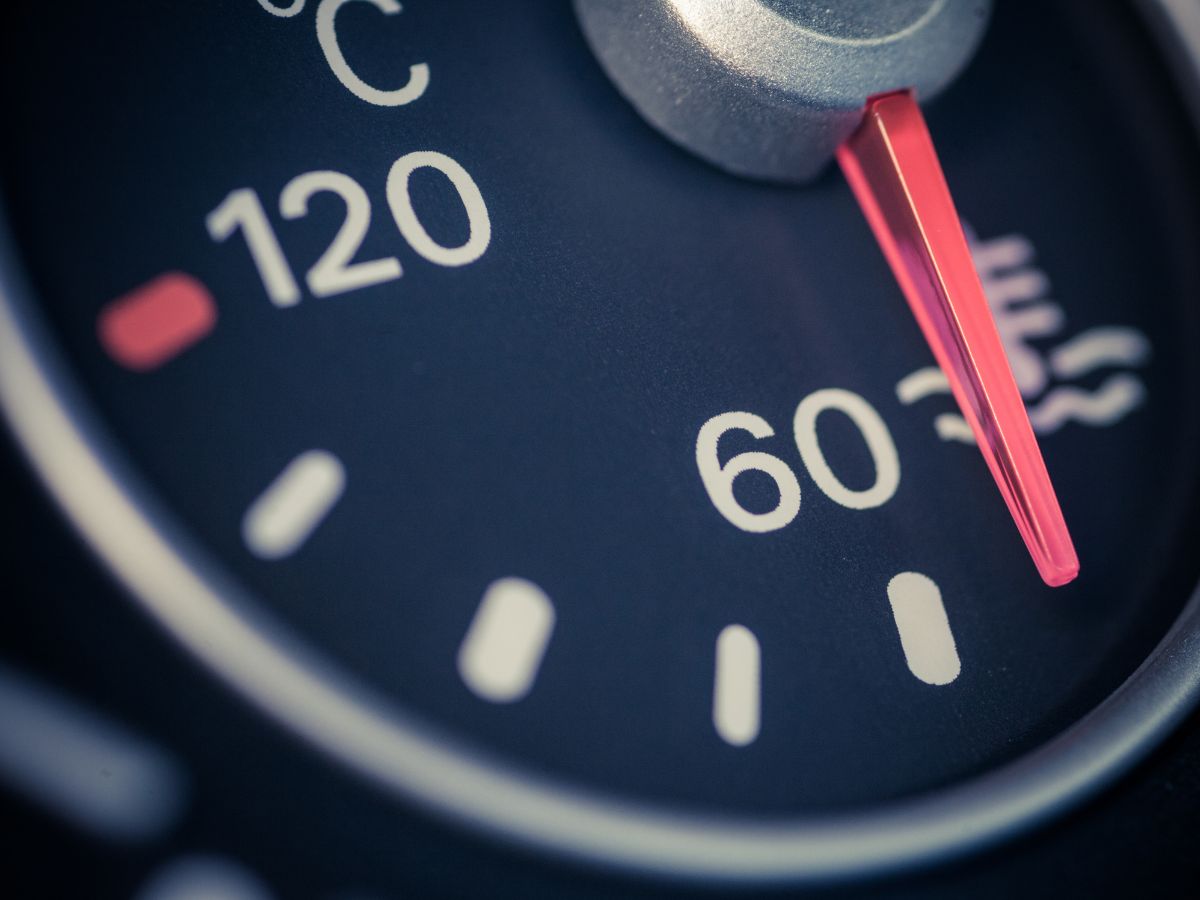
2. Poor Engine Performance
You might notice rough idling, difficulty starting the engine, stalling, or even a decreased fuel efficiency. These could all be signs of abnormal MAF readings.
3. Using an OBD-II Scanner
Use an On-Board Diagnostics II (OBD-II) scanner for a more definitive method. This device can check MAF readings in real-time and help determine if they’re within the normal range.
Troubleshooting Abnormal MAF Readings
If you’ve detected abnormal MAF readings, here are some steps you can take to troubleshoot:
1. Clean the MAF Sensor
Sometimes, the issue could be as simple as a dirty MAF sensor. Cleaning it might help restore normal readings.
2. Check for Air Leaks
A vacuum leak in the intake manifold could cause high MAF readings. Check for any loose hoses or cracks that could cause air leaks.
3. Inspect the Air Filter
A clogged air filter can restrict air flow and lead to low MAF readings. Inspecting and replacing the air filter if needed could resolve this issue.
4. Consult a Professional
If you’ve done the above steps and the readings are still abnormal, it might be best to consult a professional. The issue could be more complex, like a faulty MAF sensor or a problem with the engine management system.
Remember, early detection and troubleshooting of abnormal MAF readings can save you from potentially costly repairs and maintain your vehicle’s optimal performance.
Maintaining Your MAF Sensor: Best Practices
The Mass Air Flow (MAF) sensor plays an important role in ensuring your vehicle runs smoothly and efficiently, which is why it’s crucial to maintain it properly. Here are some best practices to keep your MAF sensor in good condition and ensure it continues to provide accurate readings:
1. Regular Cleaning
Depending on the condition and type of roads you drive on, dust and debris can accumulate on the MAF sensor over time, potentially leading to inaccurate readings. Cleaning the MAF sensor every six months to a year, or as your vehicle’s manufacturer recommends, can help keep it in good working condition.
2. Proper Filter Maintenance
The air filter’s primary job is to prevent dust and debris from entering your engine and reaching components like the MAF sensor. Regularly inspecting and replacing the air filter when needed can help protect the MAF sensor and ensure it provides accurate readings.
3. Avoid Unmetered Air
Unmetered air, or air that enters the engine without passing through the MAF sensor, can lead to inaccurate readings. Ensure all air entering the engine goes through the MAF sensor by checking for leaks in the air intake system and making sure all connections are secure.
4. Be Gentle
The MAF sensor is a delicate component. When you’re cleaning or inspecting it, be gentle to avoid damaging it.
5. Professional Inspection
If you’re unsure about the condition of your MAF sensor, it’s best to have it inspected by a professional. They can check the sensor’s condition and operation, and provide any necessary maintenance or repairs.
By following these best practices, you can help ensure your MAF sensor stays in good condition and continues to provide the accurate readings that your engine management system relies on.
Wrapping things up
In conclusion, the Mass Air Flow (MAF) sensor is vital to your vehicle’s engine management system. It measures the amount of air entering the engine and helps ensure the optimal air-fuel mixture for efficient combustion. Understanding the importance of MAF readings, especially at idle G/S, can be instrumental in identifying potential engine issues early on.
The ‘normal’ MAF reading at idle can vary based on several factors like vehicle make and model, engine size, vehicle age and condition, altitude, and air temperature. However, most vehicles typically idle between 3.5 to 5.0 G/S.
Detecting abnormal MAF readings can involve observing signs like the Check Engine Light and poor engine performance or using an OBD-II scanner. Troubleshooting might include cleaning the MAF sensor, checking for air leaks, inspecting the air filter, or consulting a professional.
Maintaining your MAF sensor involves regular cleaning, proper air filter maintenance, avoiding unmetered air, being gentle during inspection or cleaning, and getting professional inspections when necessary.
By understanding your MAF sensor readings and maintaining the sensor properly, you can ensure your vehicle runs smoothly and efficiently, saving you from potential costly repairs and helping keep your engine in good condition.






